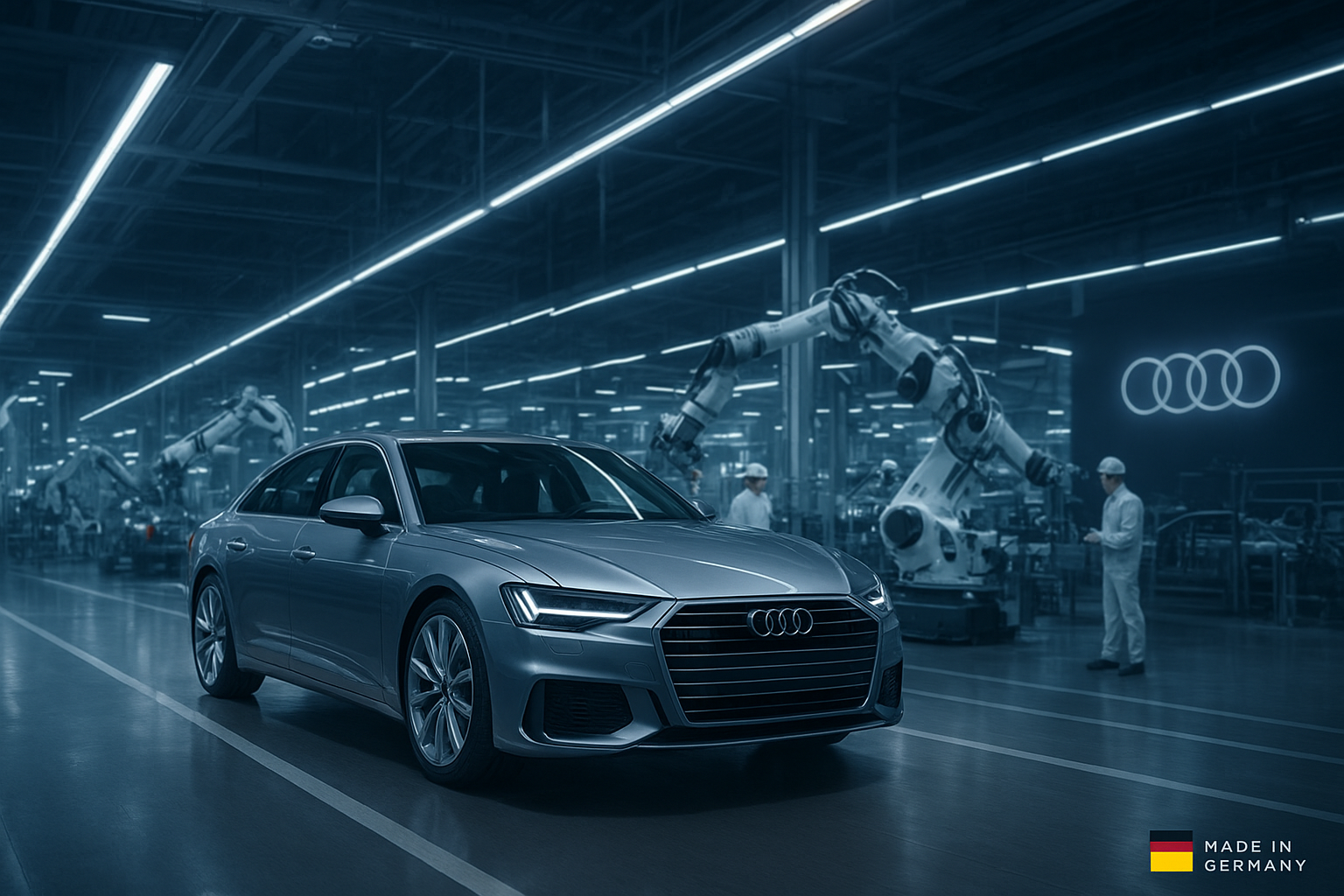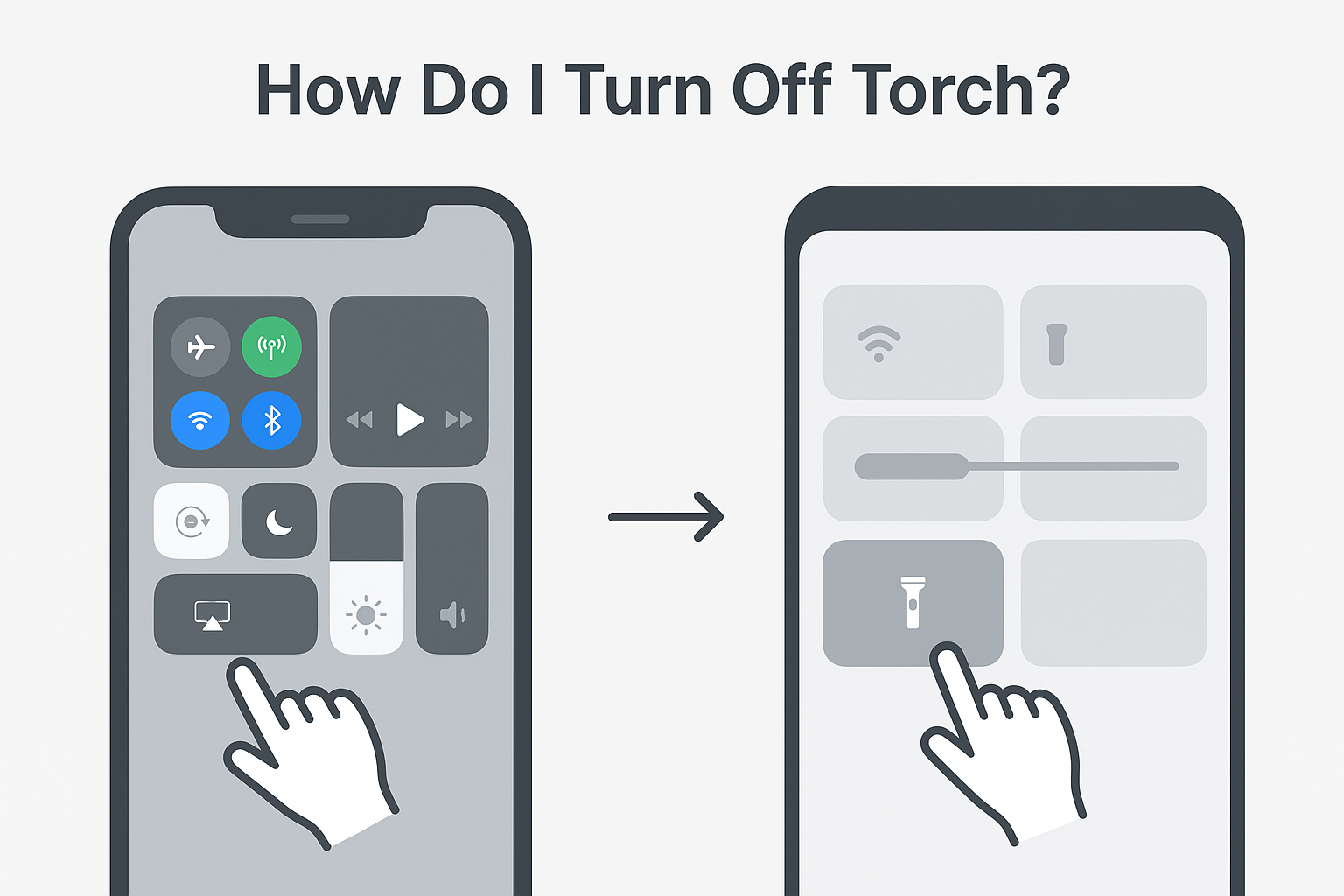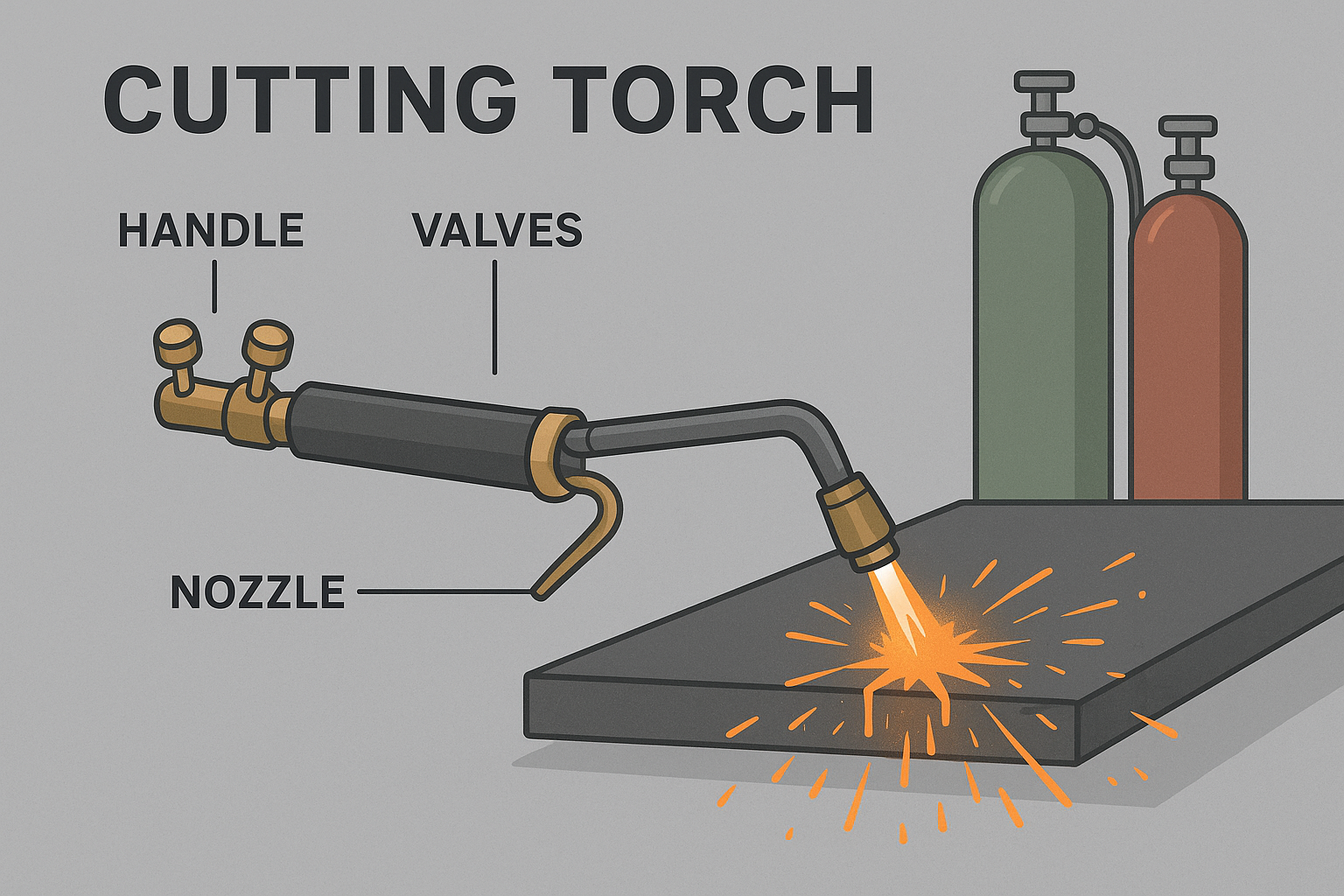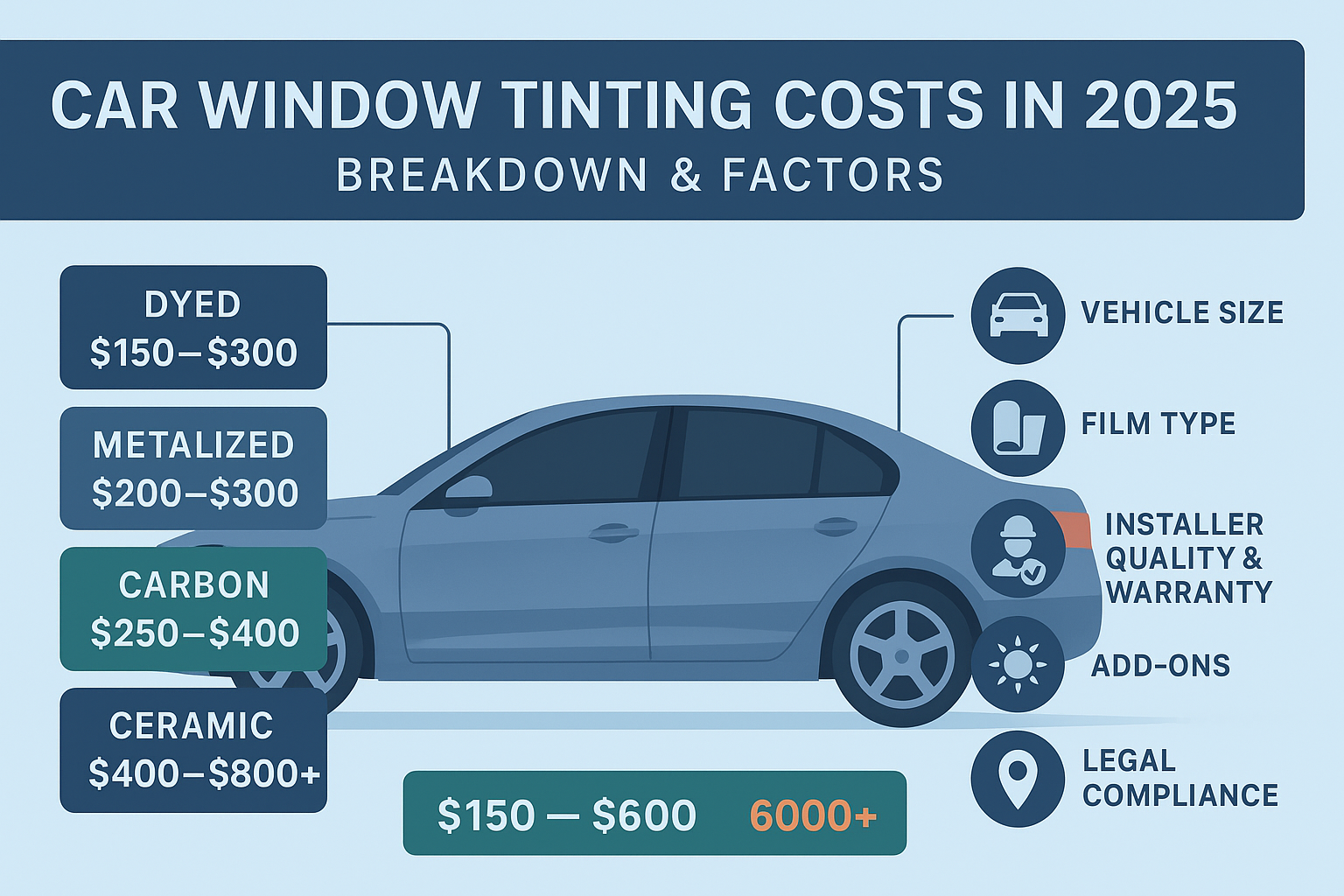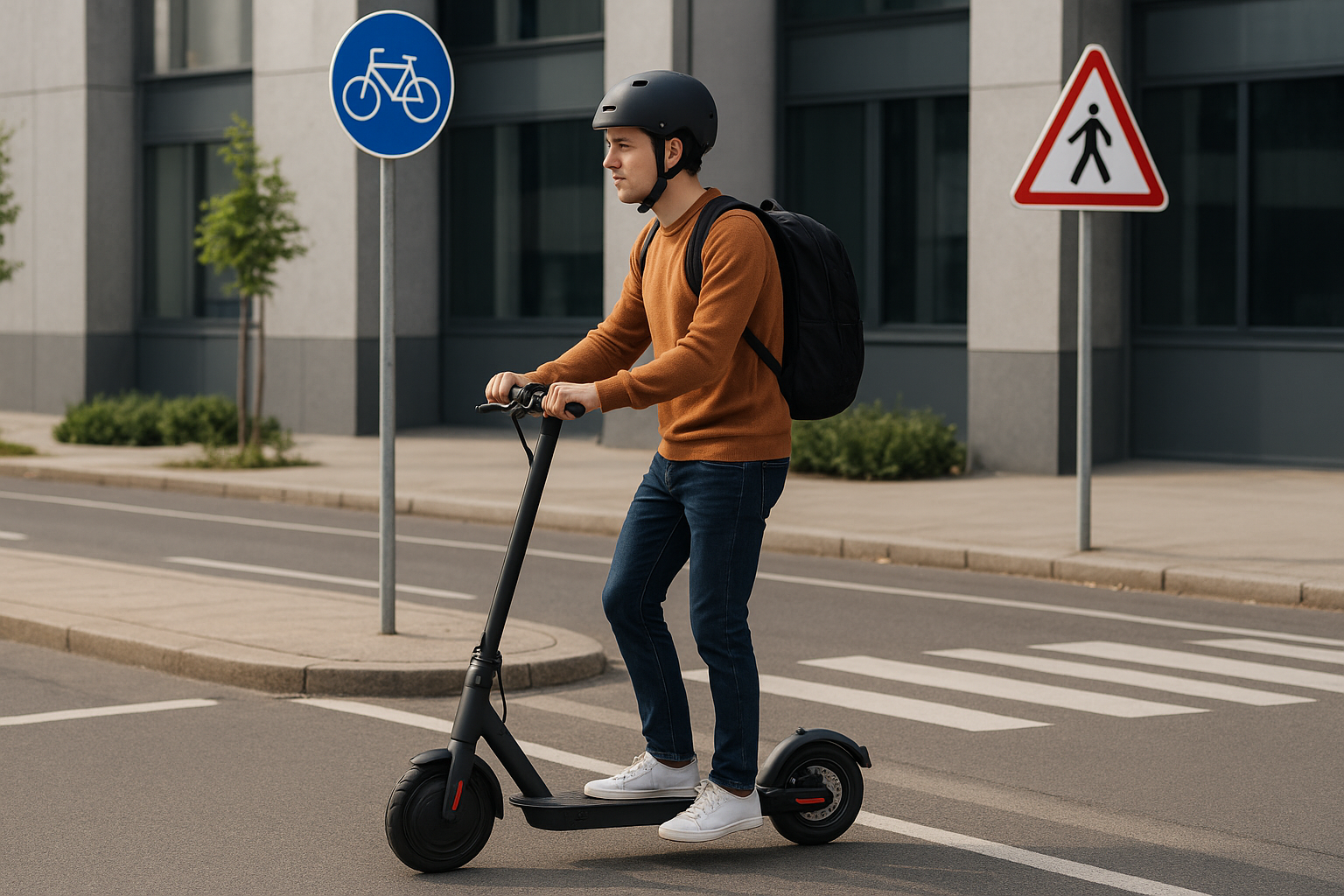Car window tinting has become more than just an aesthetic upgrade — it’s about privacy, UV protection, comfort, and even boosting vehicle longevity. But if you’re considering tinting your car windows this year, one of your first questions is: how much does it actually cost in 2025?
The price of car window tinting can vary widely depending on materials, local regulations, the type of vehicle you drive, and the expertise of the installer. Below, we’ll break down the costs, explore the factors that influence pricing, and help you understand what to expect before you book your appointment.
Average Cost of Car Window Tinting in 2025
On average, car window tinting in 2025 costs between $150 and $600 for most standard cars. However, this range can go up to $1,000 or more if you choose premium films like ceramic or infrared rejection tint.
Here’s a quick breakdown:
- Basic Dyed Film: $150 – $250
- Carbon Tint: $200 – $400
- Ceramic Tint (Premium UV & Heat Rejection): $400 – $800+
- Full Luxury/High-End Package: $800 – $1,200
SUVs, trucks, or vehicles with more glass surface usually cost more than sedans due to additional labor and material.
Key Factors That Affect Tinting Costs
Several variables play into the price you’ll pay:
1. Type of Tint Film
Not all films are created equal. Basic dyed tints are the cheapest but don’t last as long, while ceramic or infrared films are pricier but offer superior UV protection, heat reduction, and clarity.
2. Vehicle Size and Window Count
A compact car with four windows will cost significantly less to tint compared to a seven-seater SUV with large windows.
3. Installer Expertise
Professional tint shops charge more, but you’re paying for quality application, warranty protection, and compliance with state laws. DIY kits are cheaper ($50–$100), but they often result in bubbling, peeling, and uneven finishes.
4. Location and Local Regulations
In areas with stricter laws on window tinting, shops may need to use certified films, which can increase costs. Always check your state’s legal tint limit before booking.
Is Window Tint Worth the Price?
Yes — and here’s why:
- UV & Skin Protection: High-quality tint blocks up to 99% of harmful UV rays.
- Cooler Interior: Ceramic films can reduce interior heat by 40–60%.
- Privacy & Security: Tinted windows make it harder for outsiders to see inside.
- Preserves Interior: Reduces fading of leather, dashboards, and upholstery.
- Resale Value: Cars with professional tinting often look newer and more premium.
How to Save Money on Car Window Tinting
- Compare Local Shops: Get at least three quotes.
- Check for Deals: Some shops run seasonal promotions.
- Partial Tinting: Only tint the front two or rear windows if you’re on a budget.
- Avoid Super Cheap Options: Low-quality films may peel within months, costing you more in replacements.
Legal Considerations in 2025
Window tint laws vary significantly across states and countries. For example, the legal Visible Light Transmission (VLT) percentage allowed on front windows may differ from rear or back windows.
Failing to comply can lead to fines or removal orders. Always ask your installer about certified legal tint films in your region before finalizing your choice.
Related Reading
If you’re curious about other vehicle upgrades and safety regulations, you might also like our guide:
👉 Do You Need a Driver’s License for a Scooter? Rules, Exceptions, and Safety Tips
Both topics explore vehicle rules and upgrades that can save you from unexpected fines or safety issues.
Final Thoughts
So, how much to tint car windows in 2025? Expect to pay anywhere from $150 to $600 for standard tinting, and up to $1,000+ for premium films. The exact cost depends on your car type, tint material, and installer expertise.
While it might be tempting to go cheap, investing in high-quality tint not only ensures durability and legal compliance but also enhances comfort, safety, and vehicle value.
If you’re planning a tint job this year, weigh your options carefully, check local laws, and always choose a trusted installer for the best results.





